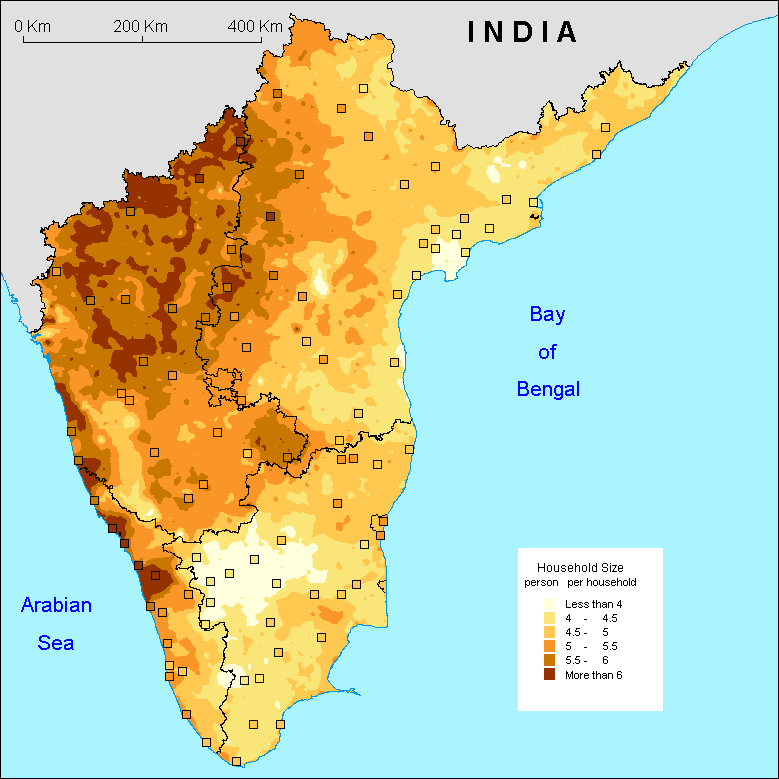|
Household size is a crucial variable to understand family dynamics in India. However, it is rarely studied in India, as its interpretation is far from straightforward. The average size of a census household (persons who commonly live and take their meals from the same kitchen) is related to a host of various factors such as the size of the offspring, the family type or even various events such as migration. The main determinant of household size is today fertility as the decreasing birth rates automatically translates into smaller-size families with fewer children.
It
is therefore no coincidence if our map of household size closely
resembles that of fertility levels.
On average, families include more than 5 persons in the Deccan
tracts, in a region covering most of Karnataka as well as Telengana
districts of Andhra Pradesh. On the opposite, the average household
size value observed in Tamil Nadu, in coastal Andhra Pradesh
and in large areas in Kerala fall under the 5 and even below
4 in some pockets.
The second determinant of household size is the family structure and in particular, the occurrence of joint vs. nuclear families among households. As joint families tend often to bring together married children and living parents, they result in larger family units. The impact of the family arrangements can only be guessed by closely comparing household size and fertility and some interesting features emerge based on such a statistical analysis. On the whole, the western states of Karnataka and Kerala appear to display bigger household size than predicted by the sheer value of fertility indicators, be they low along the coast or high in the interior Deccan region. This suggests that the joint family structure is much more frequent in these parts of South India than in Andhra Pradesh and Tamil Nadu, a hypothesis that is also supported by data on family structure from the National family and Health Survey. In these two sates, separate family arrangements between parents and married children are more common; in addition to the low number of children per couple in these areas, it results in the smallest household size observed in India.
Another
feature worth stressing is the fact that tribal
areas in the hills -where fertility is uniformly higher
than in the plains- do not exhibit significantly larger household
size. This strongly suggests that among the tribes, the extended
family unit is much less common than among Hindus or other communities.
The same also applies to a lesser extent to Dalits and agricultural
labourers, although this feature fails to come into sight on
the map on this scale. As to the cities, urban populations seem
often characterized by larger household size than their low
fertility would imply.
C.Z.G.
|

